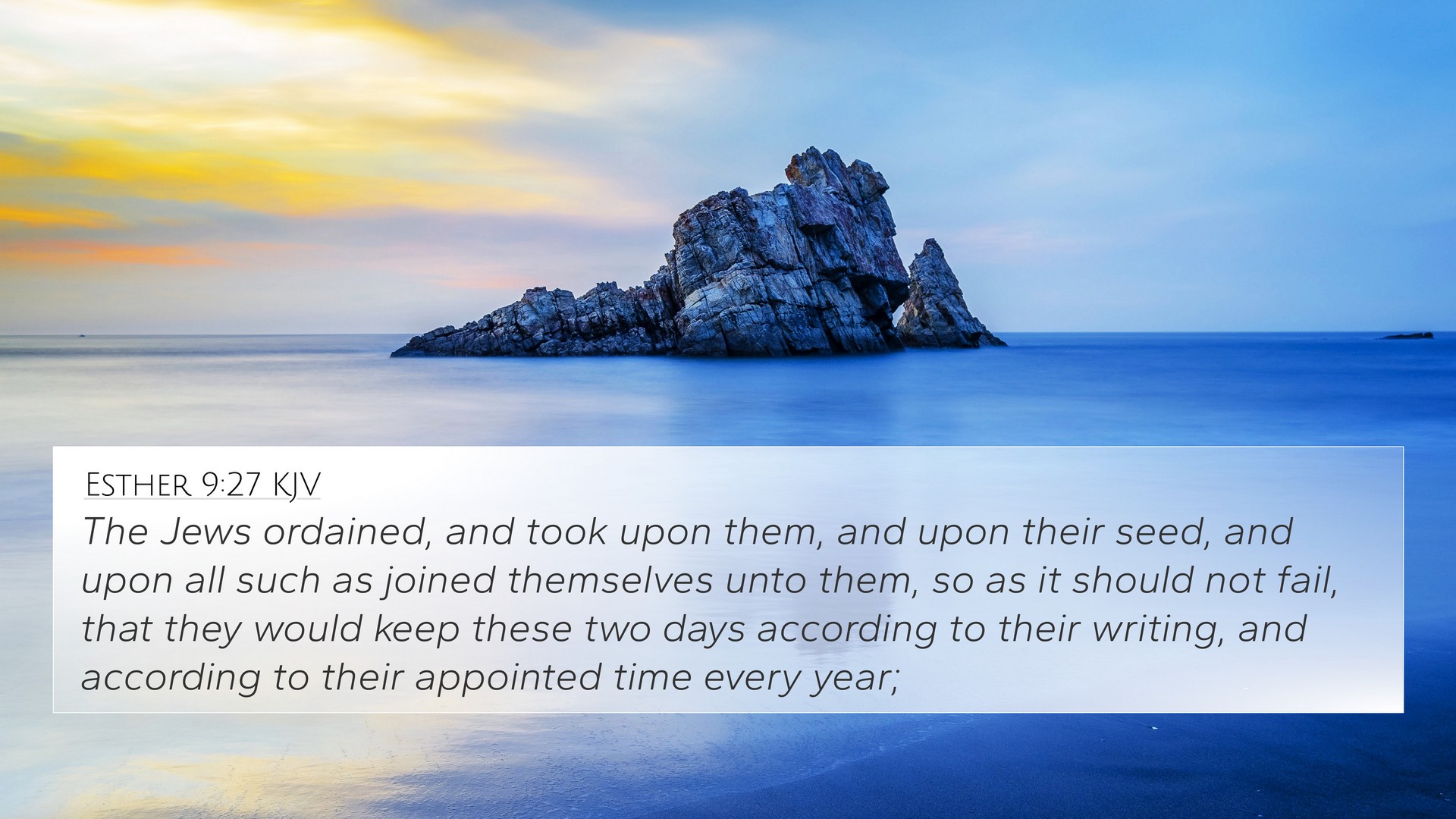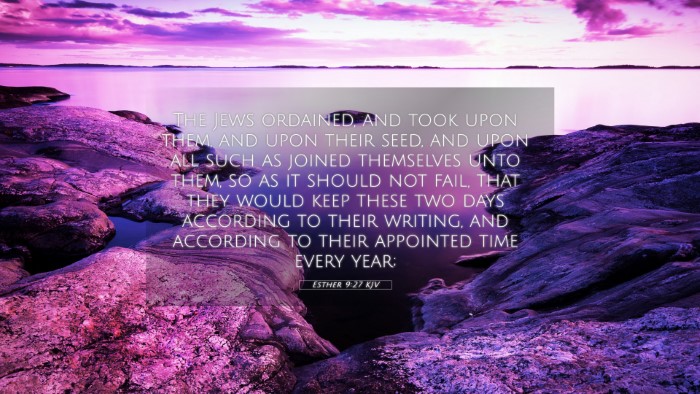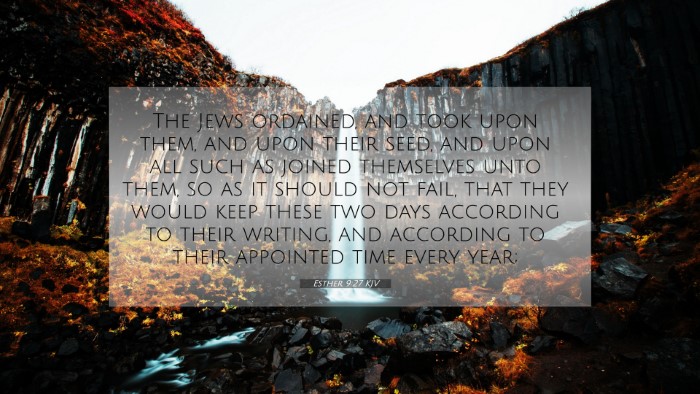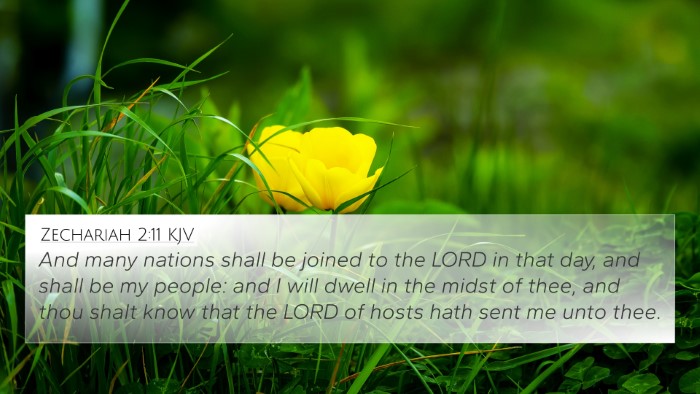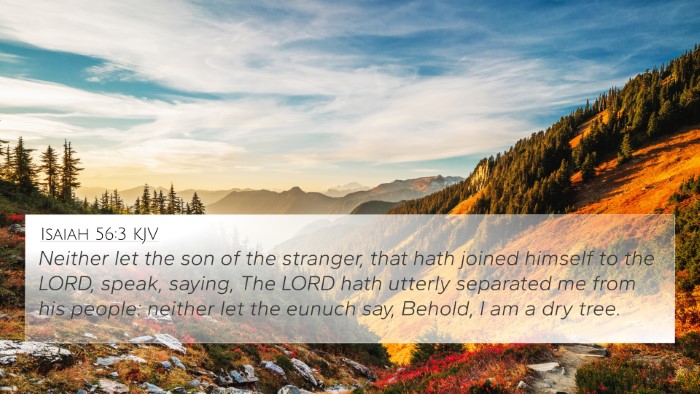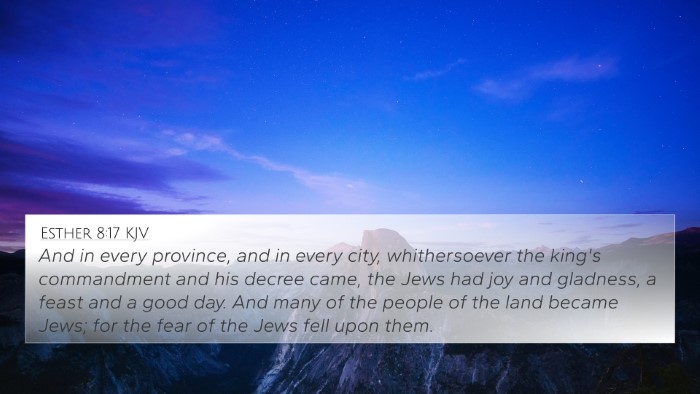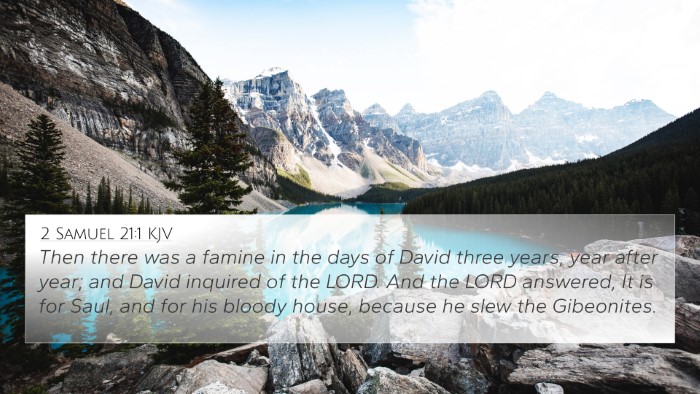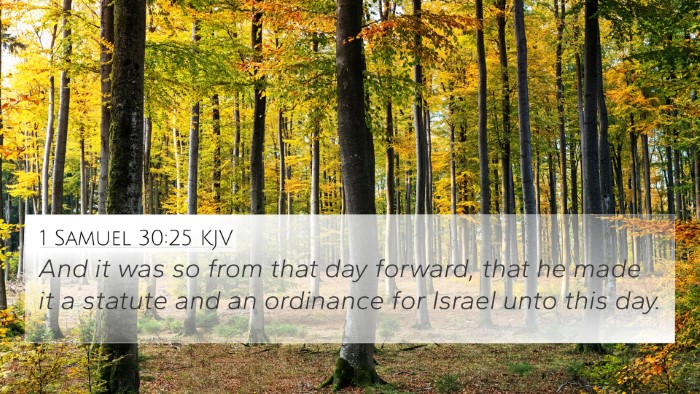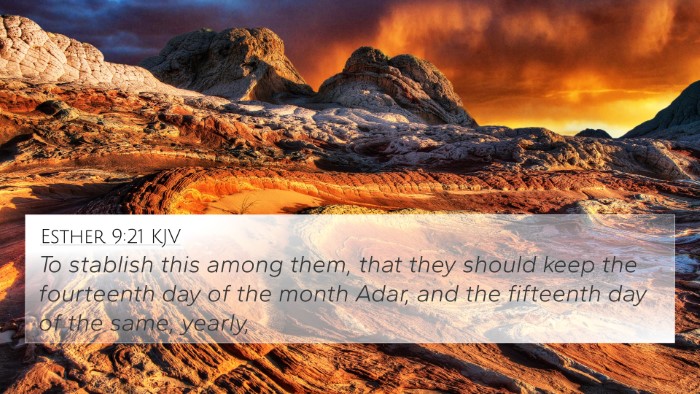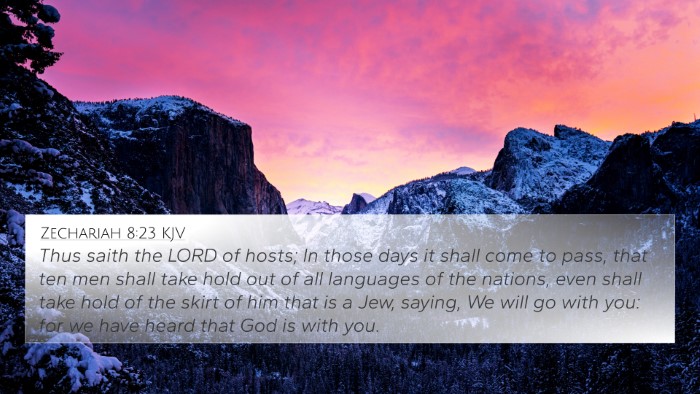Understanding Esther 9:27
Esther 9:27 reads: "The Jews established and took upon themselves, and upon their seed, and upon all such as joined themselves unto them, so as it should not fail, that they would keep these two days according to their writing, and according to their appointed time every year."
In this verse, we see the establishment of a lasting observance of the Feast of Purim by the Jewish people, marking their victory over their enemies and the preservation of their nation.
Commentary Insights
-
Matthew Henry:
Henry emphasizes the importance of the remembrance of divine deliverance. The Jews made this observance a binding duty, underscoring the sentiment that acknowledging God's grace should be integral to their identity as a people. This verse signifies their intent to remember not just the event but to celebrate it annually, reinforcing community and faith.
-
Albert Barnes:
Barnes discusses the societal implications of this verse. By taking it upon themselves and their descendants to uphold this festival, the Jews were creating a tradition of solidarity and identity. This observance serves as a reminder of their fragility and God's providential care. The structure shows their intent to weave this celebration into the fabric of their lives.
-
Adam Clarke:
Clarke highlights the significance of the intentionality behind the establishment of the festival. The Jews did not see this just as a celebration but as a necessary covenant between themselves and God, a vow to keep the memory of their deliverance alive, thereby fostering both cultural identity and spiritual fidelity.
Bible Cross References
- Esther 9:1-2: Reviews the historical context where the decree of the king is executed, leading to the Jewish victory.
- Psalm 136:10-15: Embodies themes of God's deliverance, echoing the significance of remembering past salvations.
- Exodus 12:14: Discusses the Passover, another institution commemorating divine deliverance, highlighting a precedent for remembrance.
- Deuteronomy 16:14-15: Commands feasting as a form of celebration before the Lord, emphasizing communal joy in God’s mercy.
- Nehemiah 8:10: Encourages joy in the Lord as strength, which echoes the festive spirit of Purim.
- John 15:12-13: Emphasizes loving one another and reflects how community celebration strengthens bonds, paralleling Purim's essence.
- Luke 22:19: Jesus institutes the Lord's Supper, adding to the theme of remembrance in a new covenant context.
- Hebrews 10:24-25: Advises believers to gather and encourage one another, similar to how Purim creates community gatherings.
- Revelation 12:11: Highlights overcoming by the blood of the Lamb, resonating with the theme of victory and remembrance.
- Romans 15:4: Addresses how the scriptures provide hope and encouragement, aligning with the lessons derived from commemorative traditions.
Thematic Connections between Bible Verses
The importance of remembrance in both Old and New Testaments underscores a significant theme where God's faithfulness is consistently recognized and celebrated. Esther 9:27 becomes a case study in observing traditions that forge identity and faith across generations.
Understanding Esther 9:27 invites contemplation on methods for cross-referencing Biblical texts. A structured approach to Bible study can illuminate these interconnections, revealing comprehensive insights into the divine narrative.
Tools for Bible Cross-Referencing
Engaging with Bible cross-reference guides and Bible concordances can enhance one's study of Scripture. These tools facilitate the identification of themes, repetitions, and connections that weave through the text.
When searching for Bible verses that relate to each other, consider exploring resources that highlight cross-references for sermon preparation or methods for cross-referencing Bible study. Such practices can deepen the understanding of biblical themes and theological constructs.
Cross-Referencing Biblical Themes
The festival initiated in Esther 9:27 serves as more than a historical fact; it is a lens through which readers can examine inter-Biblical dialogue. By comparing this observation with New Testament teachings, one can discern the continued importance of remembrance and community within Christian faith.
When examining the connections between the Old and New Testaments, one might consider how communal celebrations such as Purim resonate with the practices of the early church in celebrating the Lord's Supper and other foundational events of faith.
Conclusion
Esther 9:27 encapsulates a profound moment in Jewish history, crafted through divine intervention and human response. The commitment to remembrance illustrates a broader biblical principle extending across various scripture passages. Through comparative Bible verse analysis, the act of remembering becomes a central theme indicative of faith, identity, and community across generations.
As we delve deeper into the biblical narrative, understanding verses like Esther 9:27 enriches our appreciation for the intricate tapestry of God's dealings with His people—reminders not only of past victories but also assurances of His present faithfulness.
